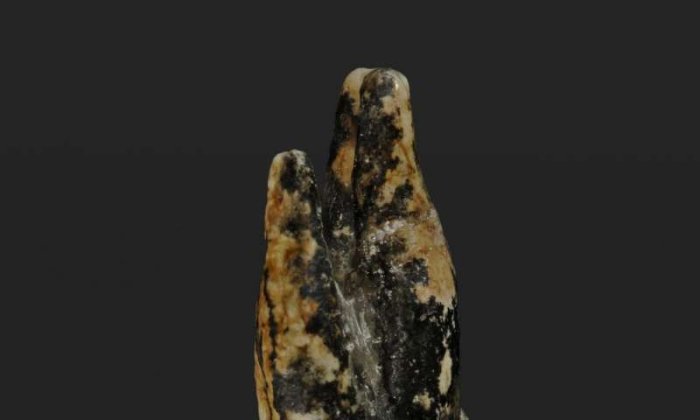7.2-Million-Year-Old Pre-Human Remains Suggest Our First Ancestor Came From Europe Not Africa
AncientPages.com - Two fossils of the species Graecopithecus freybergi, discovered in Greece and Bulgaria have now been dated to between 7.2 and 7.1 million years ago.
The discovery is quite intriguing because it suggests first human ancestors came from Europe and not Africa, as previously thought.
Present-day chimpanzees are humans' nearest living relatives. Where the last chimp-human common ancestor lived is a central and highly debated issue in palaeoanthropology.
 A 7.24 million year old upper premolar of Graecopithecus from Azmaka, Bulgaria. Credit: Wolfgang Gerber, University of Tübingen
A 7.24 million year old upper premolar of Graecopithecus from Azmaka, Bulgaria. Credit: Wolfgang Gerber, University of Tübingen
Previously, scientists had thought hominins and chimps split between seven and five million years ago, with the first in the hominin line emerging in Africa. The examined fossils, a lower jaw and an upper premolar tell a different story about the onset of human evolution.
Graecopithecus freybergi, nicknameded ‘El Graeco' by scientists is a hominid originally identified by a single fragment of skull found in 1944. Since then more specimens have been found, indicating that the specimen may be the oldest known direct ancestor of modern man.
See also:
The fossils were examined by an an international research team headed by Professor Madelaine Böhme from the Senckenberg Centre for Human Evolution and Palaeoenvironment at the University of Tübingen and Professor Nikolai Spassov from the Bulgarian Academy of Sciences.
“Graecopithecus is not an ape. He is a member of the tribe of hominins and the direct ancestor of homo
The food of the Graecopithecus was related to the rather dry and hard savannah vegetation, unlike that of the recent great apes which are leaving in forests. Therefore, like humans, he has wide molars and thick enamel.
The lower jaw of the 7.175 million year old Graecopithecus freybergi (El Graeco) from Pyrgos Vassilissis, Greece (today in metropolitan Athens). Credit: Wolfgang Gerber, University of Tübingen
To some extent this is a newly discovered missing link. But missing links will always exist , because evolution is infinite chain of subsequent forms. Probably El Graeco's face will resemble a great ape, with shorter canines," said Professor Nikolai Spassov from the Bulgarian Academy of Sciences.
The fossils change the beginning of human history and place the last common ancestor of both chimpanzees and humans - the so-called Missing Link - in the Mediterranean region.
“This study changes the ideas related to the knowledge about the time and the place of the first steps of the humankind,” said Professor Spassov said.
AncientPages.com
Expand for references




















